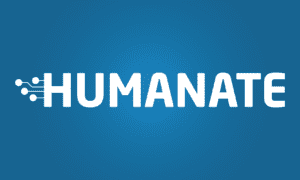mHealth (mobile health) paradigm has made some remarkable strides over the past decade, riding on the wave of the ubiquity of smartphones.
The past few years has seen rapid penetration of smartphones in developing world and emerging economies, apart from the developed countries. The growing number of smartphone ownership, coupled with access to high-speed internet, has been a key underpinning to the expansion of avenues in the mHealth market. Wellness and health applications (apps) have risen in popularity on the back of this trend. One of the key consumer propositions has motivated the adoption of mHealth technologies among patients and healthcare industry in general is the use of mHealth in boosting not only access to quality care delivery. In particular, several healthcare industries have invested high stakes in mHealth market for the role of the mHealth interventions in management of chronic diseases.
Use of mHealth Apps to Rise for Chronic Condition Management
The use of mHealth apps for chronic condition management (CCM) has gathered immense traction among patients. In general population, especially among millennials, have been leaning on the use of interventions on improving lifestyle behaviors. On the other end of the spectrum, healthcare providers and mHealth developers are seeing vast potential in propelling the prospects in the mHealth market. All these trends reinforce the projection in a report by TMR, that the market is expected to clock 22.1% CAGR during 2017-2025.
Request Brochure for mHealth Market Report
A number of mHealth apps are being used for general health and wellness and for monitoring fitness. Examples are the growing adoption of mHealth in heart rate monitors, activity monitors, fetal monitoring, and neuromonitoring.
In the past few years, connected wellness platforms have been showing high potential in managing chronic diseases, notably metabolic disorders. A number of mHealth programs empowered by connected wellness platforms have seen increasing rate of adoption. mHealth programs for advancing smoking cessation strategies are attracting high optimism among target populations. Further, mHealth apps are being projected to meet medication adherence in elderly populations.
Companies and Researchers Leaning on Improving mHealth Effectiveness
A number of mHealth technologies have come to the fore for meeting the most prevalent needs of health. Advances in technologies have led to the increase in mHealth effectiveness. In this regard, context-aware interventions have gained popularity in improving the effectiveness. Another popular category is gamification. The demand for such mHealth technologies is gaining traction for inducing behavioral change approaches. With the adoption of IoT, chronic condition management is expected to make strides in the mHealth market. However, technological sophistication might dampen the widespread adoption.
Over the past decades, the epidemic of obesity has put a high burden on healthcare sector. A growing body of research has focused on mHealth initiatives for managing overweight and obese persons. Researchers are using these for studying the effectiveness of mHealth intervention for targeting lifestyle behaviors.
TMR offers custom market research services that help clients to get information on their business scenario required where syndicated solutions are not enough, request for custom research report
On the regional front, North America has been a promising regional market. The strides made in wearables is a key trend bolstering the prospects in the regional market. The general population in the U.S. has fervently embraced mHealth interventions in improving physical activity.
Private and public organizations have been spending sizably on mHealth interventions in community health and overall public health. A growing number of global players are leaning on leveraging advanced mobile technologies.
Europe is also a promising regional market. On the other hand, Asia Pacific has vast unmet need. The regional market is expected to rise at promising CAGR during 2017 – 2025. In the coming years, emerging economies in the region is expected to see a growing number of products in mHealth in near future. The integration of digital technologies in healthcare is expected to boost the market.



































